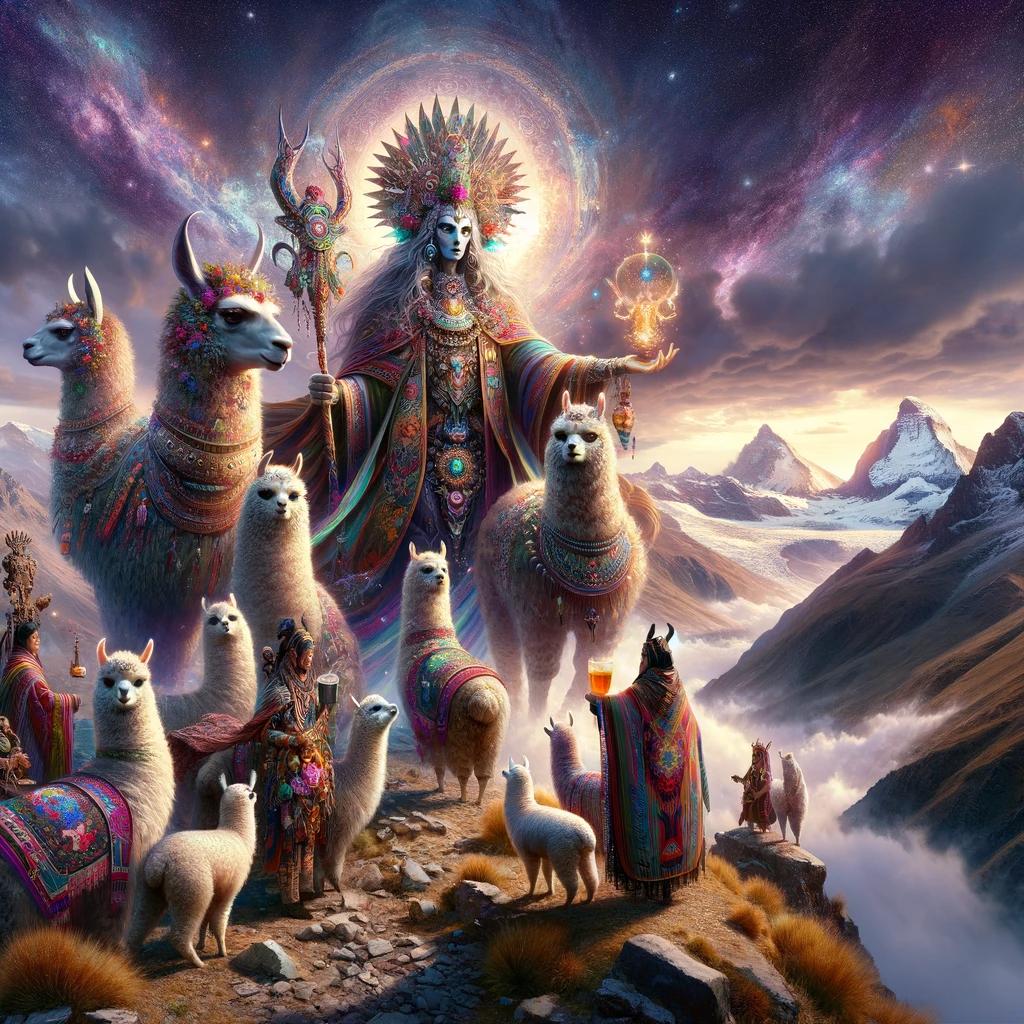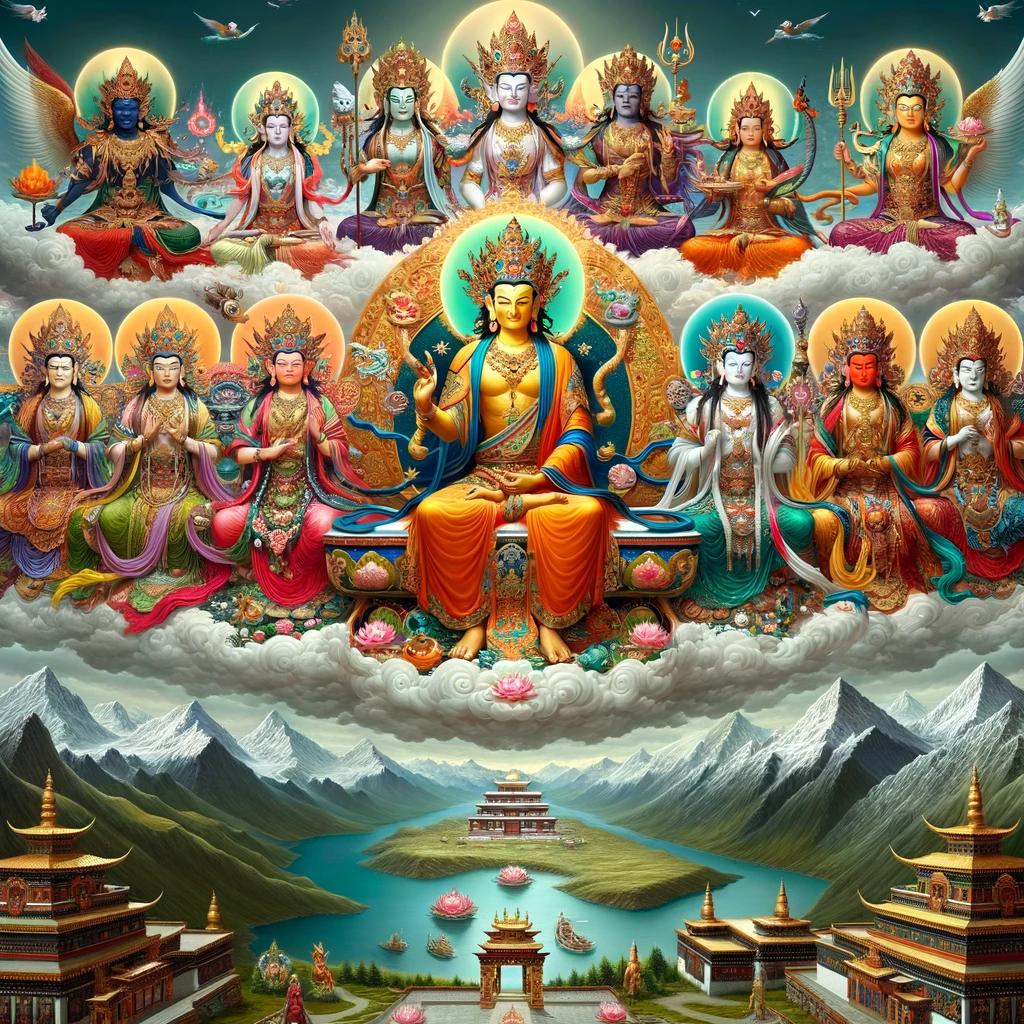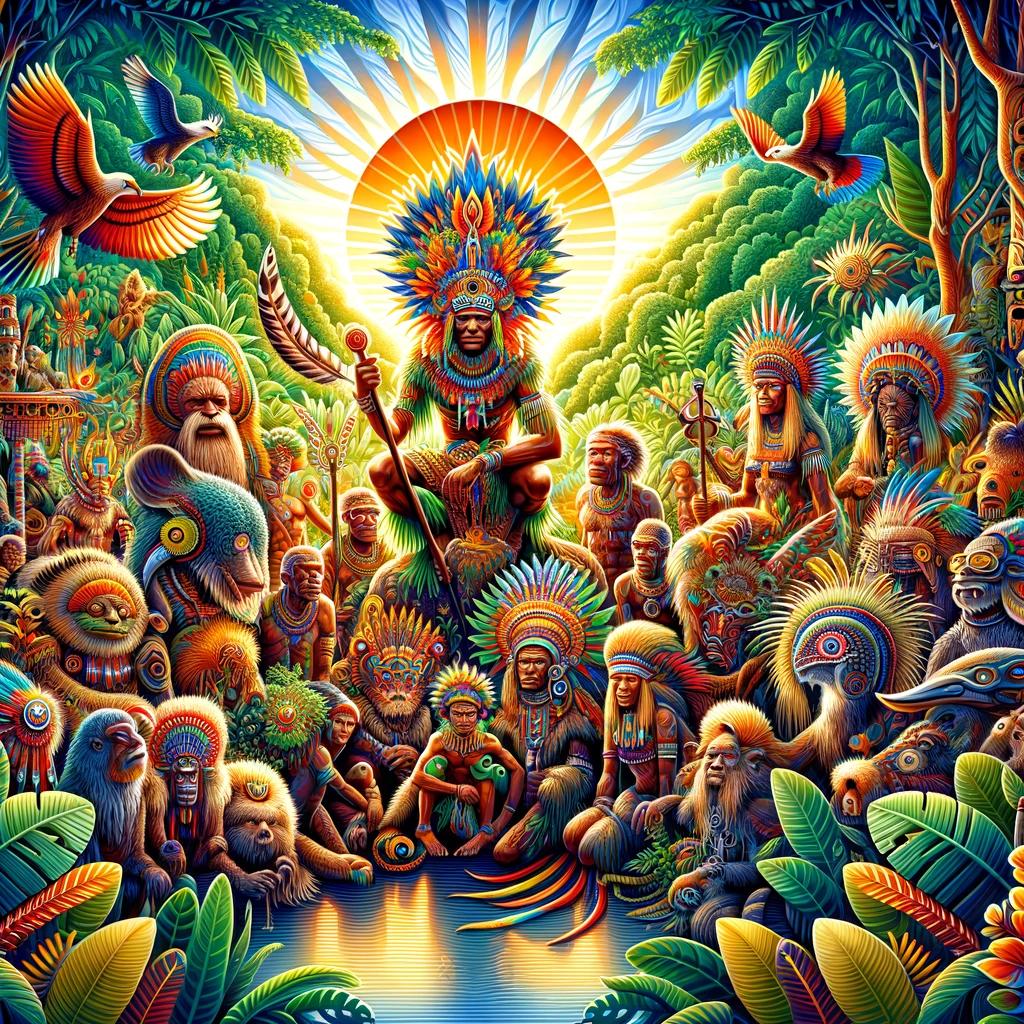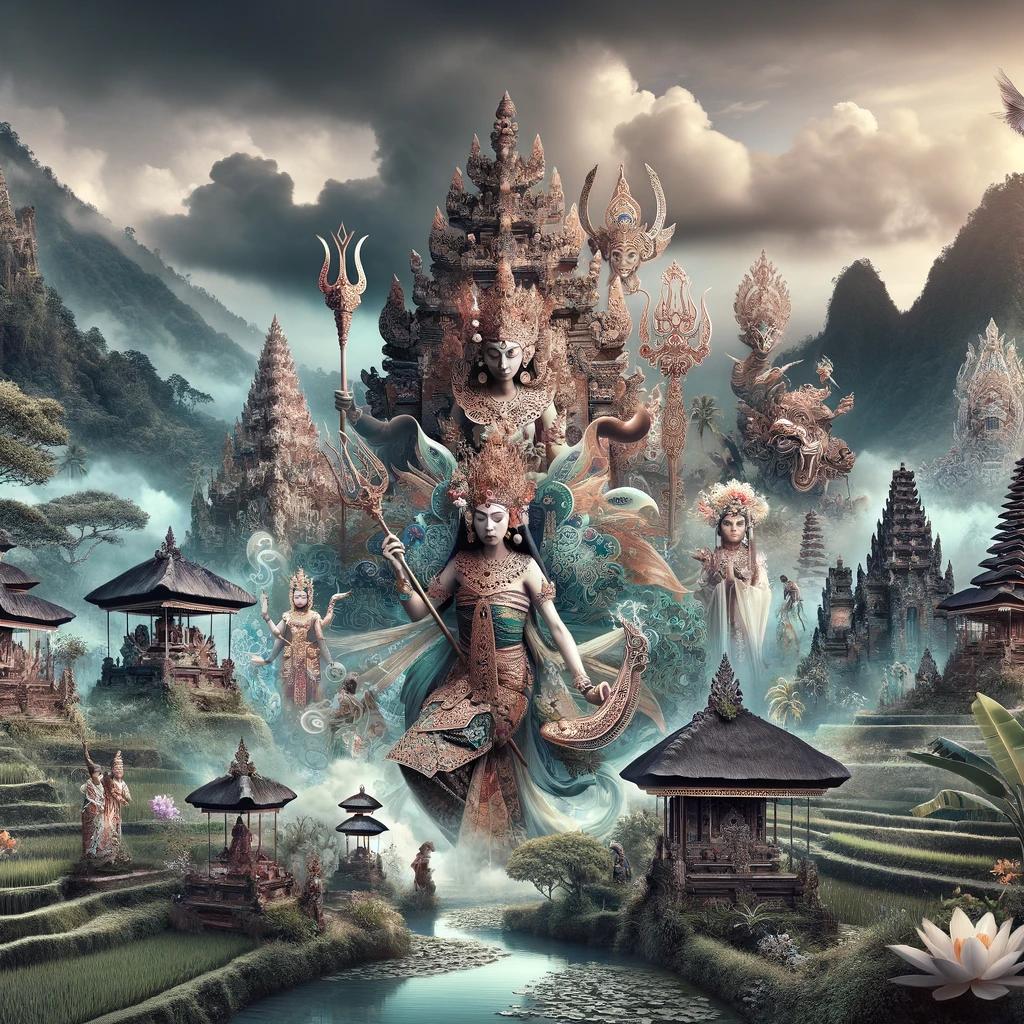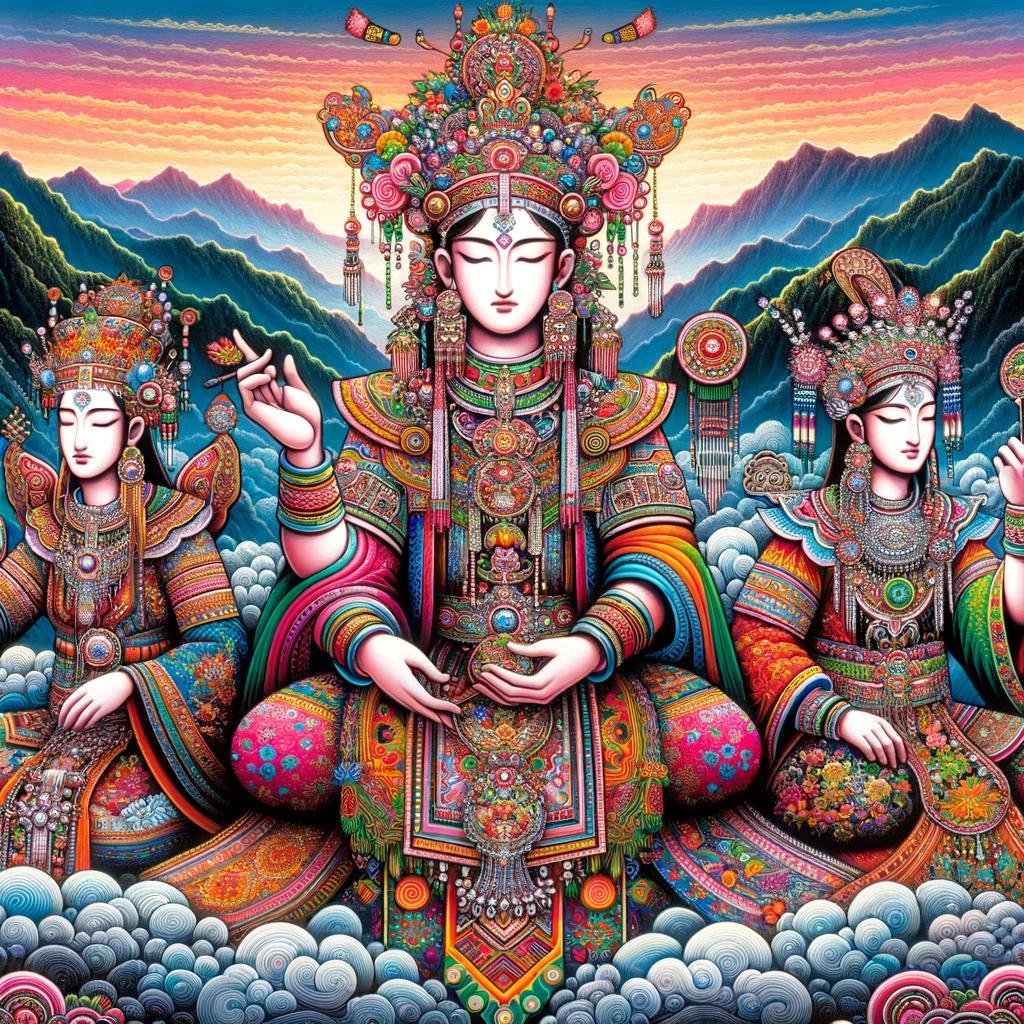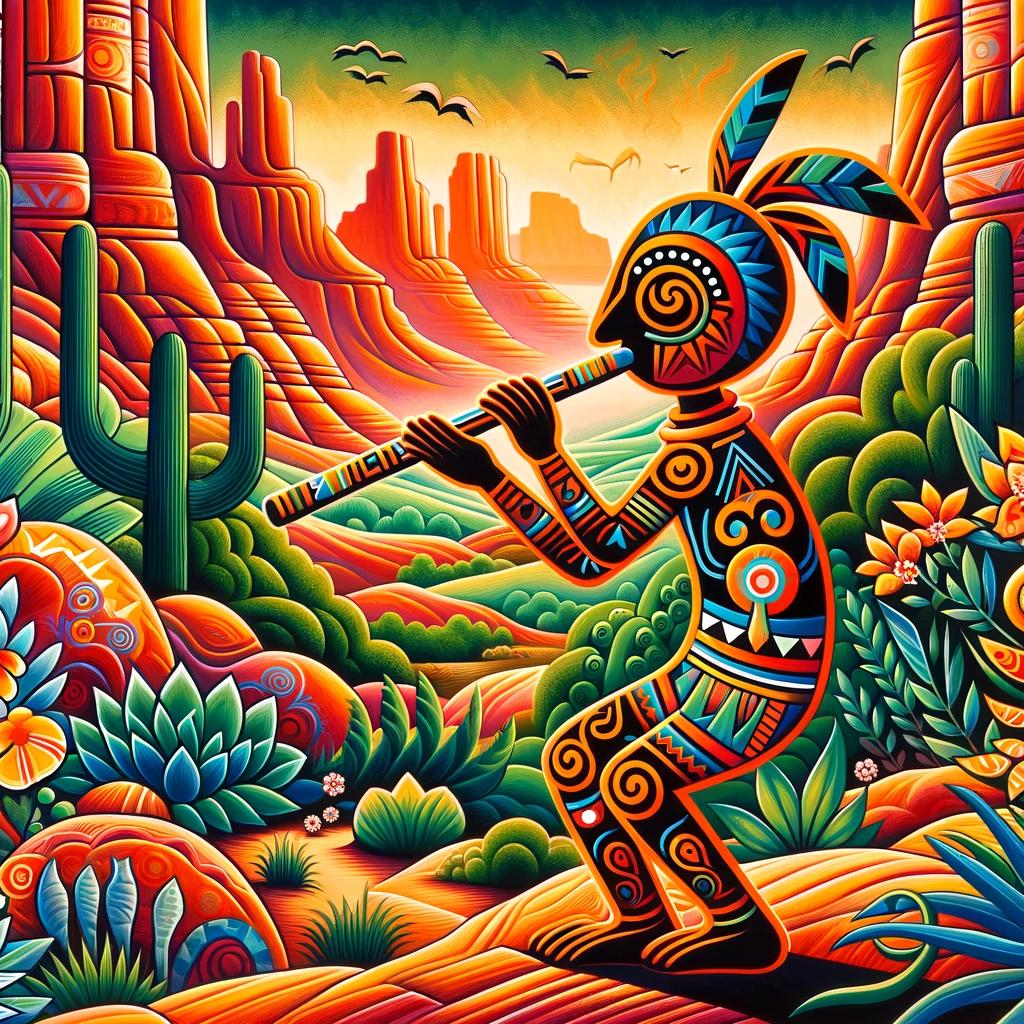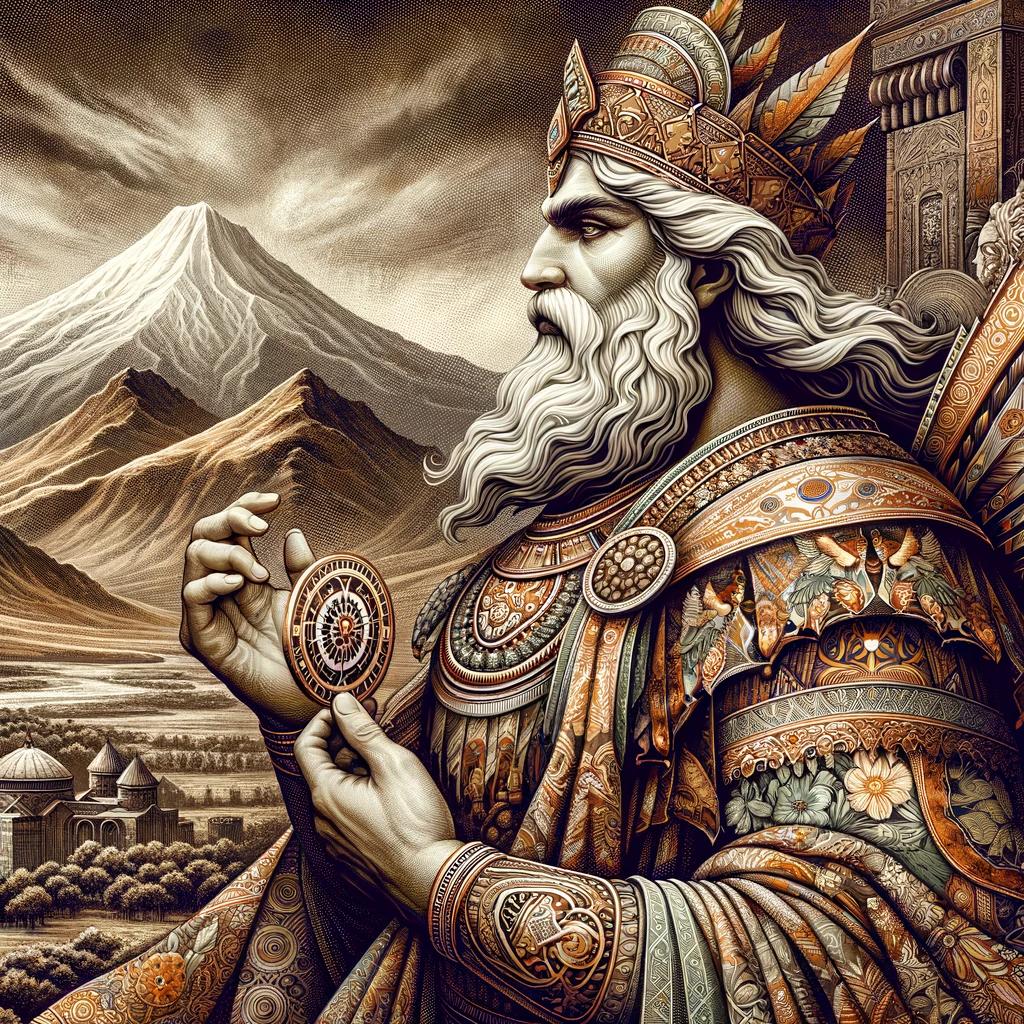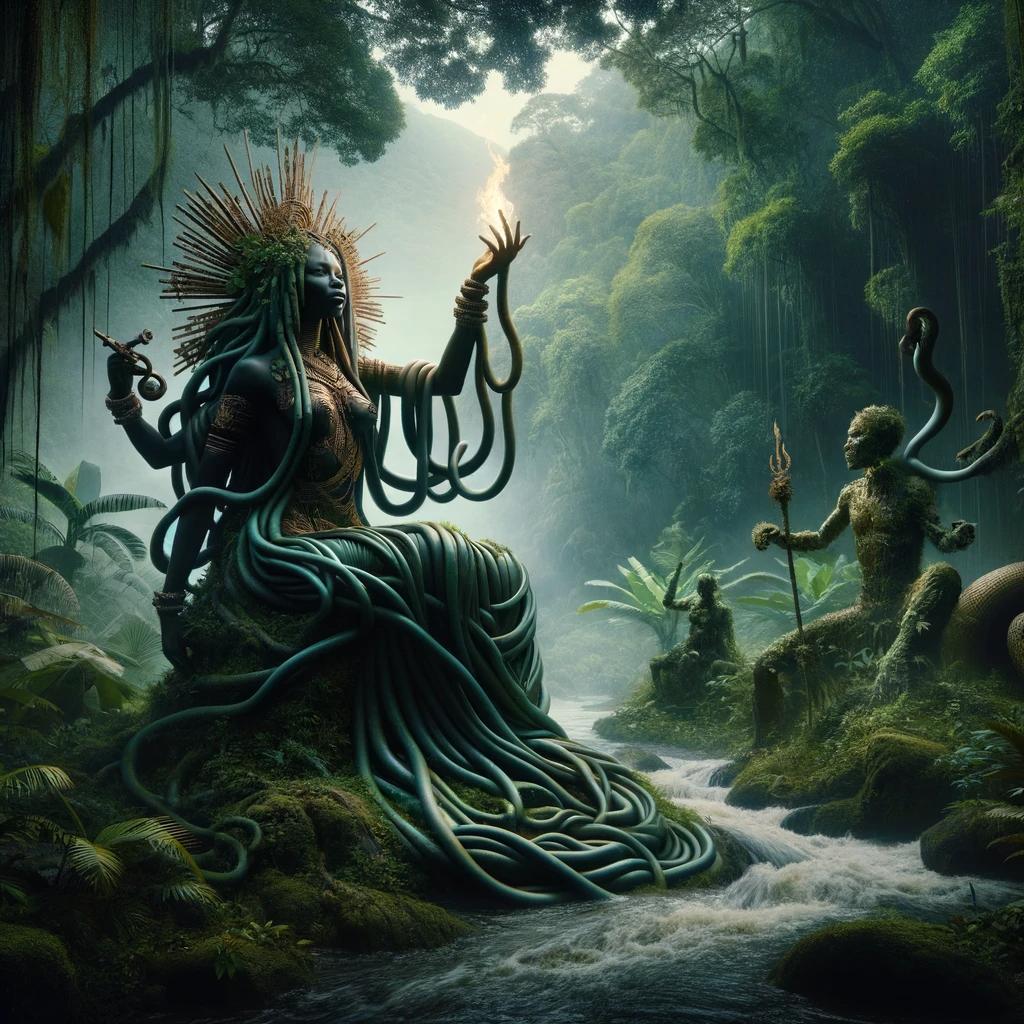Aymara Mythology: Exploring the Rich Cultural Heritage of the Andes in the United States
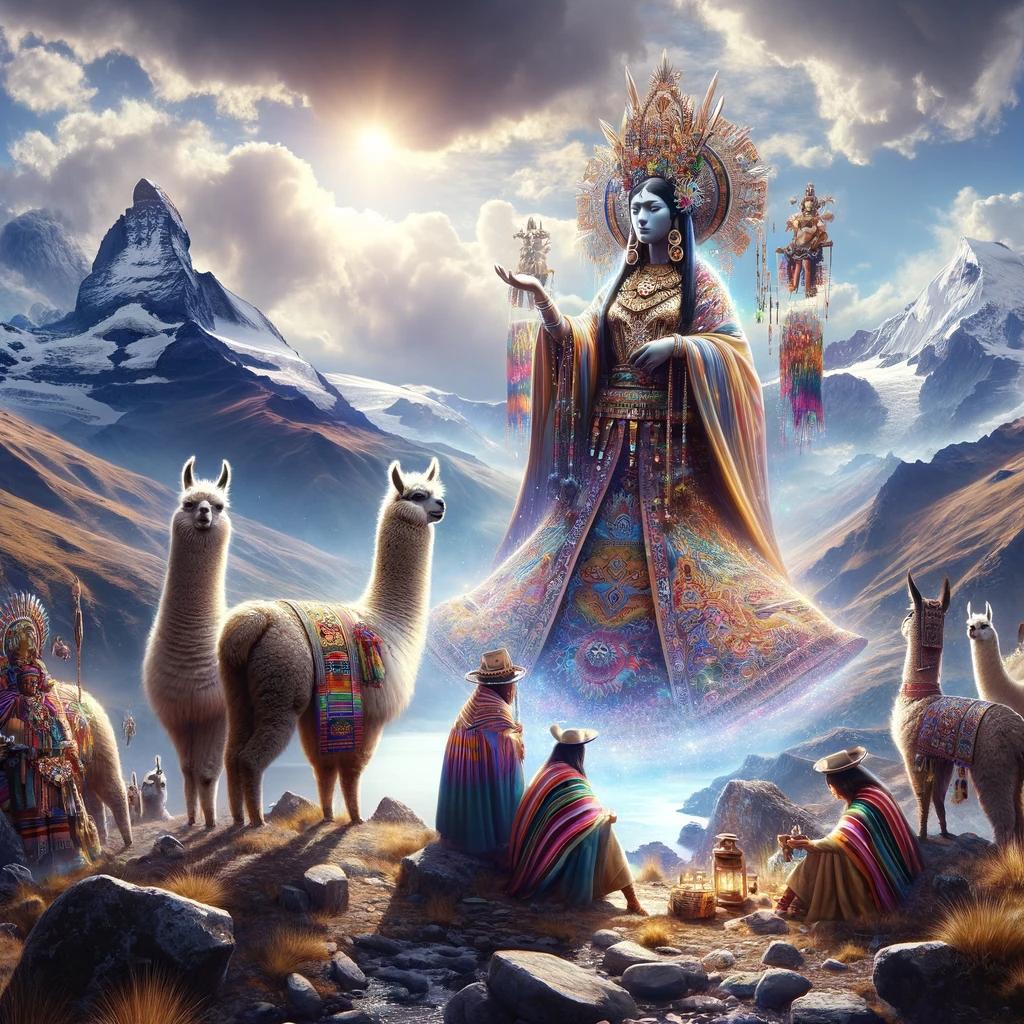
Aymara mythology is a fascinating aspect of the rich cultural heritage of the Aymara people, who primarily inhabit the Andes region of Bolivia, Peru, and Chile. It reflects their deep connection with nature and religious beliefs.
This article explores the ancient beliefs, stories, and symbolism of Aymara mythology, as well as its influence on daily life, rituals, and traditional practices. It also delves into the historical background, deities, myths, and legends, highlighting the preservation efforts and contemporary interpretations of Aymara mythology.
Aymara Mythology: Exploring the Ancient Beliefs and Stories of the Aymara People
Aymara mythology is a fascinating realm of ancient beliefs and captivating stories that have been passed down through generations among the Aymara people. It reflects their deep connection with nature, their spirituality, and the wisdom gained from their ancestors.
The foundation of Aymara mythology lies in the belief that nature and all living beings are intrinsically interconnected. This worldview shapes their understanding of the cosmos, their place in it, and their relationship with the divine.
Central to Aymara mythology are the stories and legends that bring to life their understanding of creation, heroes, and mythical creatures. These narratives shed light on the origins and purpose of existence, offering valuable insights into the Aymara people’s cultural identity.
Through these ancient tales, the Aymara people find meaning, inspiration, and guidance for their lives. These stories serve not only as a source of entertainment but also as a tool for moral instruction, teaching valuable lessons about virtues, values, and the consequences of human actions.
One notable aspect of Aymara mythology is its oral tradition. The stories have been transmitted orally from one generation to the next, ensuring the preservation of their cultural heritage and the continuity of their beliefs and customs.
Exploring the ancient beliefs and stories of the Aymara people provides a unique glimpse into their profound spirituality and their intricate understanding of the world around them. It invites us to delve into a rich tapestry of myths and legends that have shaped the Aymara culture for centuries.
The Significance and Symbolism of Aymara Mythology in Aymara Culture
Aymara mythology holds immense significance and deep symbolism within the Aymara culture, reflecting their profound connection with nature and spiritual beliefs. These mythological narratives and symbols play a crucial role in shaping their worldview, values, and rituals.
The Aymara people view the world as an interconnected web, with every being and element holding intrinsic meaning and purpose. Aymara mythology serves as a guide to understand the cosmic forces, natural phenomena, and human experience, offering insights into the mysteries of life and the universe.
Symbolism in Aymara mythology is richly woven into their cultural practices, arts, and rituals. Each deity, hero, and mythical creature represents specific qualities and attributes that embody their values and aspirations.
For example, Pachamama, the Earth Mother deity, symbolizes fertility, abundance, and nurturing. Inti, the Sun God, represents light, warmth, and vitality.
These mythological symbols influence various aspects of Aymara culture, including agriculture, healing practices, and social harmony.
Rituals and ceremonies are performed to honor and appease the deities, seeking their blessings, protection, and guidance. The Aymara people believe that by maintaining a sacred balance with nature and the spiritual realm, they can ensure prosperity, harmony, and well-being for their communities.
Aymara mythology also serves as a powerful tool for transmitting cultural knowledge and values from one generation to another. The oral traditions, storytelling, and rituals associated with these myths are deeply ingrained in the fabric of Aymara society, fostering a sense of identity and continuity.
In contemporary times, the significance of Aymara mythology continues to be celebrated and revitalized. Efforts to preserve and promote this rich cultural heritage serve as a reminder of the Aymara people’s deep-rooted spirituality, wisdom, and connection with their ancestral past.
The Origins and Historical Background of Aymara Mythology
The rich mythology of the Aymara people holds deep historical roots that date back centuries. This section delves into the origins and historical background of Aymara mythology, shedding light on the cultural heritage of this indigenous community.
The Aymara people have a long-standing history that spans at least 800 years, with their origins believed to lie in the central parts of Peru. Throughout the years, the Aymara have managed to preserve their native language, Aymara, while also adopting the Spanish language.
In addition to linguistic preservation, they have upheld traditional practices such as alpaca farming and cultivating native crops.
The heart of the Aymara region lies around the Titicaca Lake basin, with many Aymara speakers residing south of the lake.
Though the ancient capital of the Aymara civilization remains unknown, it is speculated that the city of Chucuito, located on the shores of Lake Titicaca, may have once served as the capital of the Lupaqa Kingdom.
In contemporary times, El Alto, a city near the Bolivian capital, La Paz, has emerged as a significant urban center for the Aymara people.
The Aymara culture has experienced the influence of Spanish colonization, yet it has managed to preserve its unique traditions and customs.
One iconic example of Aymara culture is the attire worn by Aymara women in Peru and Bolivia. This traditional outfit, known as the Aymara Chola attire, consists of a bowler hat, aguayo (a traditional woven cloth), a heavy skirt, boots, and jewelry.
It serves as both an ethnic identifier and a symbol of cultural pride, evolving over time in La Paz.
The Aymara people have also left their architectural mark on El Alto, where a neo-Andean architectural style can be found, influenced by the vibrant aesthetics of the Aymara women.
Another significant aspect of Aymara culture is their tradition of cultivating and chewing coca leaves. For the Aymara, coca leaves hold spiritual and medicinal significance, and they are used in various rituals and traditional practices.
The historical background and origins of Aymara mythology provide a deeper understanding of the cultural context in which these myths and legends emerged. By exploring the history and cultural heritage of the Aymara people, we gain valuable insights into the roots of their mythology and its enduring significance in their lives.
Understanding the Spiritual and Cosmological Beliefs in Aymara Mythology
Aymara mythology is deeply rooted in spiritual and cosmological beliefs that shape the worldview of the Aymara people. These beliefs revolve around the interconnectedness of nature, human beings, and the divine, forming a rich tapestry of spiritual understanding.
Central to Aymara mythology is the notion that everything in the universe is interconnected. The Aymara people perceive all living beings and natural elements as part of a greater cosmic order.
This holistic view is reflected in their reverence for natural forces such as mountains, rivers, and the sun, as well as their belief in spiritual beings that inhabit these realms.
The Aymara people believe in a pantheon of deities that govern various aspects of life.
Each deity holds a specific role and represents different forces of nature and human existence. For example, Illapa, the god of thunder and lightning, is associated with rain, fertility, and agricultural abundance.
Pachamama, the Earth Mother, is revered as the giver of life and sustenance, embodying the fertility and nurturing qualities of the land.
- Illapa: Associated with rain, fertility, and agricultural abundance
- Pachamama: Revered as the Earth Mother, giver of life and sustenance
- Inti: The Sun God, symbolizing light, warmth, and vitality
- Ekeko: God of abundance and prosperity
The Aymara people also hold a strong belief in ancestral spirits and the importance of honoring and communicating with them.
They consider their ancestors to be integral parts of their lives, and they seek guidance and protection from them. Rituals and ceremonies are performed to establish a connection with the spirits of the departed and to give thanks for their guidance and blessings.
Cosmologically, the Aymara people envision the universe as consisting of three realms: the upper, middle, and lower worlds. These realms represent different dimensions of existence and are inhabited by different spiritual beings.
The cosmic relationship between these realms and their inhabitants influences human life and endeavors. The Aymara people strive to maintain harmony and balance by acknowledging these spiritual dimensions and aligning themselves with the cosmic forces at play.
Understanding the spiritual and cosmological beliefs in Aymara mythology provides insights into the profound connection that the Aymara people have with the natural world and the divine. It shapes their understanding of their place in the universe and guides their actions in maintaining a harmonious existence.
A Closer Look at the Deities and Spiritual Beings in Aymara Mythology
In Aymara mythology, a diverse pantheon of deities and spiritual beings plays a significant role in shaping the beliefs and practices of the Aymara people. These mythical entities are revered for their power, wisdom, and influence over various aspects of life, nature, and the cosmos.
One prominent deity in Aymara mythology is Inti, the Sun God. Considered the source of life and warmth, Inti is honored for bringing light and sustenance to the world.
The Aymara people believe that Inti’s energy flows through all living beings and natural elements, symbolizing the interconnectedness of existence.
Another important figure is Pachamama, the Earth Goddess. Revered as the nurturing and fecund mother, Pachamama embodies fertility, abundance, and the cycle of life.
The Aymara people offer offerings, rituals, and ceremonies to express gratitude and seek blessings from Pachamama for a bountiful harvest and well-being.
Supay, the God of the Underworld, holds a significant role in Aymara mythology.
Often depicted as a fierce and mysterious deity, Supay represents the realm of the deceased and serves as the guardian of the spiritual world. The Aymara people perform rituals and offerings to honor the spirits of their ancestors and seek guidance and protection from Supay.
The Aymara mythology also features a pantheon of various nature spirits, known as ‘jallalla’.
These spirits inhabit natural landscapes such as mountains, lakes, and forests, personifying the elemental forces and embodying specific aspects of nature. They are believed to exert influence over the weather, natural phenomena, and the overall balance of the ecosystem.
The Aymara people often pay homage to these spirits and seek harmonious interaction with nature through rituals and practices.
- The Sun God Inti, a symbol of life and warmth
- The Earth Goddess Pachamama, representing fertility and abundance
- Supay, the God of the Underworld and guardian of the spiritual realm
- The ‘jallalla’, nature spirits personifying elemental forces
Aymara mythology’s deities and spiritual beings embody the Aymara people’s deep connection with nature, their reverence for the divine, and their understanding of the intricate interplay between the physical and spiritual realms.
These mythological figures not only shape the Aymara worldview but also guide their rituals, customs, and moral values, fostering a harmonious relationship with the natural and supernatural worlds.
Myths and Legends of Aymara Mythology: Exploring Stories of Creation, Heroes, and Creatures
Aymara mythology is a treasure trove of captivating stories that delve into the origins of the Aymara people and their worldview.
These myths and legends offer insight into their beliefs about creation, heroes, and mystical creatures.
One of the most prominent myths in Aymara mythology is the story of the origin of the Aymara people themselves.
According to legend, the first Aymara ancestors emerged from the depths of Lake Titicaca, where they were transformed from mythical creatures into humans. This creation narrative highlights the sacred nature of the lake and its significance in Aymara cosmology.
Heroes also play a vital role in Aymara mythology, embodying bravery, wisdom, and supernatural abilities. One well-known hero is Wari, the legendary warrior who defended the Aymara people from external threats.
Wari’s tales depict his extraordinary feats and his commitment to protecting the Aymara community.
The mythology of the Aymara people also features a diverse range of creatures, both benevolent and malevolent.
For instance, there is the Kusillo, a mischievous spirit associated with joy and celebrations. On the other hand, the Supay is a fearsome underworld deity who brings illness and misfortune.
These mythical beings showcase the Aymara’s belief in the coexistence of benevolent and malevolent forces in the world.
These vivid and intricate myths and legends reflect the Aymara people’s connection to their ancestral heritage and their profound reverence for the natural and spiritual realms.
Through these captivating stories, the Aymara pass down their traditions, values, and wisdom to future generations, ensuring that their mythology remains alive in the hearts and minds of their community.
The Role of Aymara Mythology in Daily Life and Rituals of the Aymara People
Aymara mythology holds a profound significance in the daily life and rituals of the Aymara people.
It serves as a guiding force, providing a framework for understanding the world and one’s place within it. This ancient belief system influences various aspects of Aymara culture, from their spiritual practices to their social interactions.
One essential role of Aymara mythology is to maintain a sacred balance between humans, nature, and the spiritual realms. The Aymara people believe that their deities and spirits play an active role in everyday life, influencing events and offering protection.
As a result, adhering to rituals and ceremonies becomes a way to connect with these supernatural forces and ensure harmony in all aspects of existence.
Traditionally, Aymara rituals are performed to honor and seek the blessings of the deities associated with agriculture, fertility, and protection. For instance, during agricultural seasons, ceremonies are held to express gratitude to Pachamama, the goddess of Earth and fertility, for bountiful harvests.
These rituals involve offerings of food, coca leaves, and other symbolic items, symbolizing the reciprocal relationship between humans and nature.
Another significant aspect of Aymara mythology in daily life is the belief in spiritual guardians or “Achachilas.” These ancestral spirits are revered and invoked for guidance, protection, and spiritual interconnectedness.
The Aymara people often perform ceremonies at sacred sites, such as mountains or lakes, to connect with these ancestral energies and seek their wisdom.
These rituals and practices play a crucial role in preserving Aymara cultural identity and strengthening the sense of community among the Aymara people. They provide a shared experience that binds individuals together, creating a deep sense of belonging and continuity with their ancestral heritage.
In conclusion, Aymara mythology holds immense significance in the daily life and rituals of the Aymara people. It serves as a spiritual compass, guiding their interactions with the natural world and the supernatural realm.
Through rituals and ceremonies, the Aymara people seek to maintain a harmonious balance between humans, nature, and the spiritual forces that shape their existence.
Influence of Spanish Colonization on Aymara Mythology and Cultural Practices
The arrival of Spanish colonizers in the Andean region significantly impacted Aymara mythology and cultural practices.
Spanish colonization brought about a cultural clash, as the Aymara people were forced to assimilate to the new foreign influences.
One of the major influences of Spanish colonization was the introduction of Christianity, which led to the syncretism of Aymara mythology with Catholicism.
This syncretic fusion resulted in the emergence of new religious practices and rituals that incorporated elements of both belief systems. Deities and mythological figures were often reinterpreted as Christian saints or biblical characters.
The suppression and persecution of indigenous traditions by the Spanish also played a role in reshaping Aymara mythology and cultural practices. The Aymara people had to adapt their rituals and beliefs to survive under Spanish rule.
Many traditional ceremonies and practices were hidden behind the façade of Christian rituals, creating a dual identity for the Aymara community.
Despite attempts to suppress indigenous customs, the Aymara people managed to preserve their cultural traditions in more subtle and covert ways.
For example, they incorporated Aymara symbolism into Christian religious art and continued to practice their ancestral rituals in secret, blending them with the new religious practices imposed by the Spanish.
The impact of Spanish colonization on Aymara mythology and cultural practices also extended to the language.
Spanish became the dominant language, gradually replacing the Aymara language in many aspects of daily life. However, the Aymara people managed to maintain their native language in specific cultural contexts and oral traditions.
Today, the influence of Spanish colonization can still be seen in Aymara mythology and cultural practices, as well as in the broader Aymara society. It serves as a reminder of the complex and resilient nature of the Aymara people, who have adapted and preserved their cultural heritage despite the challenges imposed by external forces.
Aymara Language: Preserving the Linguistic Heritage of the Aymara People
The Aymara language holds a significant place in the cultural heritage of the Aymara people, serving as a remarkable testament to their rich history. Spoken by the Aymara community residing primarily in Bolivia, Peru, and Chile, this indigenous language has been preserved and nurtured across generations, ensuring its continuity and relevance in the modern world.
The Aymara language is unique and distinct, characterized by its complex grammar and extensive vocabulary. As a linguistic treasure, it stands as a symbol of identity, connecting the Aymara people to their ancestral roots and traditions.
Through the continued usage and transmission of this language, the Aymara community reinforces their cultural values and reasserts their position within the broader global indigenous community.
Efforts have been made to promote the Aymara language, both within traditional settings and in contemporary educational systems.
Recognizing the importance of language as a carrier of knowledge and cultural heritage, Aymara language classes have been established to facilitate its learning and preservation. These classes serve as a platform for younger generations to learn and engage with their linguistic heritage, enabling them to communicate fluently and confidently in their native tongue.
Preserving the Aymara language goes beyond language acquisition. It involves fostering a sense of pride and appreciation for the linguistic heritage, as well as generating interest and enthusiasm among the Aymara youth.
By incorporating the Aymara language into various aspects of everyday life, such as literature, music, and cultural events, the language becomes a living entity, perpetuating its significance in the Aymara community.
The Aymara language is a testament to the resilience and strength of the Aymara people. By embracing their linguistic heritage and promoting its continued use, they ensure that future generations can navigate the world while staying true to their cultural identity.
In a rapidly changing world, preserving the Aymara language is a powerful act of safeguarding the Aymara people’s legacy and ensuring the vitality of their unique cultural heritage.
Exploring the Unique Traditions and Customs of the Aymara People
The Aymara people have a rich and vibrant culture that is reflected in their unique traditions and customs.
These customs are deeply rooted in their history and beliefs, and they play a significant role in defining the Aymara identity.
- Festivals and Celebrations: The Aymara people have a calendar filled with colorful festivals and celebrations that are held throughout the year.
These events showcase various aspects of Aymara culture, including music, dance, traditional clothing, and culinary delights.
- Andean Cosmology: Aymara customs are closely tied to their cosmological beliefs, which view the world as a harmonious whole.
This worldview is reflected in their ceremonies, rituals, and spiritual practices, which aim to maintain balance and harmony with nature and the spirits.
- Traditional Clothing: The Aymara people take pride in their distinctive traditional clothing, which is an essential part of their cultural expression.
Women often wear colorful polleras (skirts) and aguayos (shawls), while men don ponchos and chullos (knitted hats).
- Traditional Music and Dance: Music and dance are integral to Aymara customs and are used to celebrate special occasions and express their cultural heritage.
Traditional instruments, such as panpipes and drums, accompany lively dances that tell stories and honor their ancestors.
- Community-Based Living: Aymara customs are deeply rooted in community life. They practice ayni, a system of reciprocal labor and support within their community, fostering strong social bonds and collective decision-making.
- Agricultural Practices: Agriculture has always played a vital role in Aymara customs.
They have developed unique techniques for cultivating native crops like potatoes, quinoa, and maize, relying on traditional knowledge passed down through generations.
Exploring the unique traditions and customs of the Aymara people provides a fascinating glimpse into their rich cultural heritage.
These customs are an integral part of their identity, connecting them to their ancestors and strengthening their sense of community and belonging.
Traditional Bolivian Dress: The Cultural Significance of Aymara Fashion and Attire
The traditional dress of the Aymara people in Bolivia holds deep cultural significance and represents their unique identity.
The attire, known as Aymara fashion, is a testament to their rich heritage and customs.
One iconic element of Aymara fashion is the sombrero bombín, a bowler hat worn by both men and women.
This hat has become synonymous with Aymara culture and is a symbol of pride and resistance. It originated from the influence of European fashion during the colonial era and has since evolved into a distinct Aymara symbol.
The aguayo is another essential component of Aymara fashion. It is a colorful, woven fabric that serves multiple purposes. Women often wear it as a shawl, carrying personal belongings or even babies on their backs.
The design and patterns on the aguayo carry cultural meanings and reflect the Aymara connection to their ancestral heritage.
In Aymara fashion, the pollera pesada is a voluminous skirt worn by women.
It is intricately handwoven with vibrant colors and patterns, showcasing the craftsmanship and artistic expression of the Aymara people. The pollera pesada is not only a symbol of femininity but also represents cultural preservation and pride.
Completing the traditional attire are the intricately embroidered blouses, faldas, or skirts, and handmade boots. These elements, combined with the vibrant colors and meticulous detailing, create a visual tapestry that reflects Aymara cultural traditions.
The Aymara people view traditional dress as more than just clothing; it is an expression of their identity, history, and connection to the land. It serves as a way to preserve their cultural heritage and resist assimilation into mainstream society.
In modern times, Aymara fashion has gained recognition beyond Bolivia, with designers incorporating Aymara-inspired elements into contemporary fashion. This fusion of traditional and modern styles helps promote Aymara culture on a global scale while honoring its roots.
Through the preservation and continued practice of traditional Aymara fashion, the Aymara people ensure that their unique cultural identity remains alive and celebrated.
The Connection Between Aymara Mythology and Traditional Medicine Practices
Intrinsically linked to the spiritual and cultural beliefs of the Aymara people, Aymara mythology has a profound connection to traditional medicine practices.
Within their mythological stories and teachings, the Aymaras have passed down knowledge and understanding of the healing properties of certain plants and natural remedies.
1. Medicinal Herbs and Plants: Aymara mythology revolves around the concept of balance and harmony with nature.
It is believed that certain plants hold medicinal properties and can be used to cure ailments. For centuries, the Aymara people have relied on the wisdom passed down through their mythology to identify and utilize these plants in traditional healing practices.
2. Spiritual Healing Rituals: Aymara mythology also involves spiritual healing rituals that are intertwined with traditional medicine practices. These rituals often involve invoking the assistance of deities and spiritual beings through chants, prayers, and offerings.
By connecting with the spiritual realm, the Aymaras believe they can channel healing energy and bring about physical, emotional, and spiritual well-being.
3. Shamans and Healers: Within Aymara culture, shamans and healers play a vital role in bridging the gap between Aymara mythology and traditional medicine.
They possess deep knowledge of Aymara mythological stories and rituals and utilize this knowledge to diagnose and treat illnesses. These healers are highly respected within their communities and are seen as intermediaries between the physical and spiritual realms.
4. Natural Remedies and Techniques: The Aymara people have developed a wide range of natural remedies and techniques that are based on their mythological understanding of the world. These remedies often involve the use of herbs, plants, and other natural substances, along with specific rituals and practices.
The knowledge of these remedies has been handed down from generation to generation, ensuring the preservation of Aymara traditional medicine.
Aymara mythology serves as the foundation for traditional medicine practices within the Aymara culture.
Through the connection to their ancient beliefs and stories, the Aymaras continue to harness the healing power of nature and maintain a holistic approach to health and well-being.
Aymara Mythology and its Impact on Indigenous Peoples in the Americas
The rich tapestry of Aymara mythology extends beyond the borders of Bolivia, Peru, and Chile, influencing indigenous peoples throughout the Americas.
The profound cultural significance and spiritual beliefs embedded in Aymara mythology resonate with indigenous communities, emphasizing their shared connection to nature and ancestral wisdom.
Aymara mythology acts as a unifying force, fostering a sense of identity and belonging among indigenous peoples.
The oral transmission of myths and legends from generation to generation maintains the cultural heritage and reinforces a collective consciousness that spans across tribal boundaries.
The stories of Aymara heroes, deities, and creatures serve as a source of inspiration and wisdom for indigenous communities across the Americas.
Through these narratives, indigenous peoples gain a deeper understanding of their own origins, cultural values, and relationship with the natural world.
Aymara mythology also highlights the resilience and resistance of indigenous peoples against the historical oppression and colonialism they have faced.
By preserving and reviving their mythological traditions, indigenous communities assert their cultural autonomy and reclaim their rightful place in history.
Furthermore, the ideas and symbolism embedded in Aymara mythology contribute to a broader indigenous ecocentric worldview.
The reverence for nature, spiritual interconnectedness, and sustainable practices advocated in Aymara mythology resonate with the efforts of indigenous groups in protecting the environment and promoting ecological sustainability.
As indigenous peoples in the Americas continue to assert their rights, revitalize their cultural practices, and engage in collective struggles, Aymara mythology stands as a powerful tool for building solidarity and strengthening their shared vision for a more inclusive and equitable future.
Contemporary Interpretations and Revitalization Efforts of Aymara Mythology
Contemporary times have seen a resurgence of interest in Aymara mythology, with efforts focused on interpreting and revitalizing its significance in modern contexts. Aymara communities, scholars, and artists have embraced the rich storytelling traditions and symbolic depth of their mythology to explore its relevance and adapt it to contemporary art forms.
Through various artistic expressions such as literature, visual arts, music, dance, and theater, Aymara mythology has found new avenues for interpretation and transmission. Artists draw inspiration from ancient stories of creation, heroes, and creatures, infusing them with their unique perspectives and artistic techniques.
Revitalization efforts also extend beyond the arts into educational initiatives and community events. Aymara mythological narratives are integrated into curricula and educational materials, ensuring future generations learn about their cultural heritage and understand the significance of their mythology.
Community gatherings and festivals provide platforms for storytelling, rituals, and performances that keep the mythology alive in the hearts and minds of the Aymara people.
Furthermore, the digital age has allowed for wider dissemination of Aymara mythology, reaching global audiences.
Online platforms, websites, and social media channels provide spaces for sharing stories, interpretations, and discussions. This digital presence serves as a means to connect Aymara communities with each other and with the broader indigenous and non-indigenous communities interested in Aymara mythology.
Contemporary interpretations and revitalization efforts of Aymara mythology reflect the continued resilience and pride of the Aymara people in their cultural heritage. By embracing their mythology in modern contexts, they ensure its preservation and relevance for future generations, fostering a greater understanding and appreciation of Aymara culture and its connection to the natural world.
.











